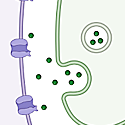Featured Paper of the Month – February 2025
Published in Molecular Psychiatry by Rani Richardson, Leandro Vendruscolo, and Lorenzo Leggio of the NIDA IRP.
We previously found that systemic and central administration of GHSR antagonists reduced binge-like alcohol drinking, whereas a ghrelin vaccine did not. Thus, we hypothesized that central GHSR drives binge-like alcohol drinking independently of peripheral ghrelin.










